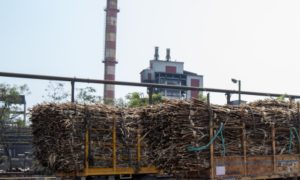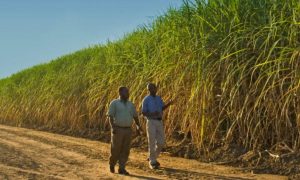Sustainable pricing model needed for boosting capex in ethanol manufacturing: Triveni MD

India is on track to achieve 18% ethanol blending in petrol during the 2024–25 ethanol supply year, with the revised 20% target set for 2025–26 looking well within reach, says Triveni Engineering MD Tarun Sawhney. He emphasized the need for sustainable pricing and capacity expansion to maintain momentum, and called for revising ethanol and sugar prices to reflect rising costs.
The central government has advanced the target of 20 per cent ethanol blending in petrol to the 2025-26 ethanol supply year (ESY) from its earlier target of 2030. In the current ESY (November 1, 2024 to October 31, 2025) 18 per cent ethanol blending is projected.
Tarun Sawhney, Vice Chairman & Managing Director of Triveni Engineering & Industries Ltd, one of the leading producers of sugar and ethanol in the country, said the 20 per cent target is likely to be met well within the revised timeframe.
However, the challenges are in sustaining the momentum, Sawhney said in a freewheeling chat with DH’s Gyanendra Keshri. He underlined the need for chalking out a future roadmap to encourage capital investments in the sector.
What is your outlook for ethanol blending this year and the 20 per cent target, which the government has set for ESY 2025-26?
We are set to achieve 18 per cent ethanol blending in petrol this year. This is a testament to sound planning by the government and effective execution of the plan by oil marketing companies and distilleries. The 20 per cent target for next year looks well within reach. However, the opportunity extends beyond this milestone.
There are multiple options. One is to increase the blending percentage further, as seen in Brazil, which used to operate at 27 per cent and has now gone beyond 30 per cent without altering vehicle technology. The second is higher adoption of flexible fuel vehicles, which can run on blends up to 100 per cent.
This can also be done using affordable conversion kits. Another option is blending ethanol in diesel. Right now there is no ethanol blending in diesel in India. Blending 2–3 per cent ethanol in diesel is technically feasible. To achieve these, it is crucial for the industry to invest in expanding its capacity. A sustainable pricing model for ethanol will play an essential role.
What is the pricing model the industry is looking for?
Sugar and ethanol sector is heavily regulated. The input costs have increased sharply over the years but there is not much change in procurement price of ethanol by the oil marketing companies. I am not asking for deregulation of the price. Because deregulation can lead to several other issues and it may pose challenges for distilleries and farmers. What we are demanding is that there should be some mechanism in place to ensure linkage between cost and selling price. I will give you an example, two years ago when we started buying maize the price was Rs 19 per kg. Today it is Rs 27 per kg. But the price of ethanol produced from maize remains the same.
What is your outlook on sugar price this year?
Sugar prices have remained largely stable over the past several years. A modest 2 to 2.5 per cent increase in price has been seen recently. For the industry, prolonged price stagnation over five years has significantly squeezed margins. Rising costs of sugarcane, labour, and operations have eroded profitability. Considering the increase in the Fair and Remunerative Price of sugarcane and other costs, the MSP for sugar must be revised to Rs 39.14 per kg from the current Rs 31 per kg. The revision of sugar MSP is imperative not only for the financial health of sugar mills but also for ensuring fair and timely payments to farmers.
How significant is sugar and ethanol in the Triveni Engineering & Industries business?
We are one of India’s largest sugar producers, operating eight sugar plants across Uttar Pradesh. We produced 0.89 million tonnes of sugar in the sugar season 2023-24. The sugar season runs from October to September. In our alcohol business, we produced over 180 million litres of alcohol during the financial year 2023-24, through our five distilleries. Sugar and alcohol contribute nearly 90 per cent to our overall turnover.
What is your plan for expansion of Mysuru manufacturing facility?
Our power transmission business is based out of Mysuru. We have two plants in Mysure. We manufacture high-speed gearboxes. It is used in gas and steam turbines, compressors, and high-speed pumps. In the past three years, we have announced cumulative capex of Rs 400 crore for power transmission business. This includes setting up a dedicated facility for the defence sector. The new capex will significantly enhance manufacturing capacities at our Mysuru plants.
What kind of impact do you expect from the US tariffs on your business?
Our power transmission businesses have some exposure to the United States. We export gearboxes to North America, Europe and Japan. However, around 90 per cent of our revenue is from sugar, alcohol and ethanol. It is consumed domestically. Overall, the impact of US tariff changes on our operations would be negligible.
To Read more about Ethanol Industry & Bio Energy News, continue reading Agriinsite.com
Source : Deccan Herald















